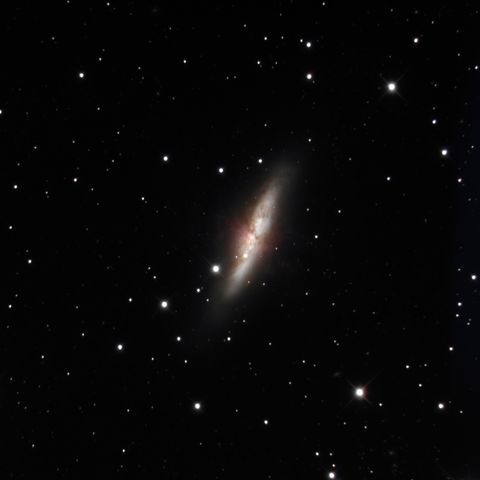
- #How to see a supernova on starry night pro 7 for mac os x#
- #How to see a supernova on starry night pro 7 for mac os#
- #How to see a supernova on starry night pro 7 manuals#
- #How to see a supernova on starry night pro 7 pdf#
- #How to see a supernova on starry night pro 7 upgrade#
The basics of everything the new amateur astronomer needs to know is discussed in the book. The Companion book is a nice introduction to amateur astronomy for someone new to night sky observing, with or without a telescope.
#How to see a supernova on starry night pro 7 pdf#
Unfortunately, some pages in the PDF document did not display well on the iPad (using iOS 8.1.2) or in Preview on the Mac (OS X 10.10.1) or Acrobat Reader 11.0.10, as seen here from the first page of Chapter 1, with text hidden by the large black area:įortunately, this problem is limited to just a few pages the rest of the pages are OK. But then it quickly moves away from Starry Night and provides a good background to the sky and observing, as shown in the Table of Contents above. The beginning of the book talks about using Starry Night as a "time machine" (to view the sky at any time in the past, present, or future) and a "spaceship" (to view the universe from any where on or off the Earth). I first read the "Starry Night Companion" (192 pages, including two appendices, glossary, and an index) just to see what level of amateur astronomer it was aimed for. I copied both documents to my iPad for ease of reading. The covers and the Companion Table of Contents are shown here:

There are two PDFs accessible from the Help menu: "Starry Night 7 Users Guide" (for Mac and Windows) and a "Starry Night Companion". So, what about Starry Night Pro Plus? I'll first briefly discuss its documentation, and then extensively cover using the program. Also in the observatory are Norton's Star Atlas (19th Edition 1998),įirefly Moon Map, Sky & Telescope Lunar Map (from about 1962),īurnham's Celestial Handbook (3 volumes), and The Revised New General Catalog of Nonstellar Astronomical Objects (1973).įrom the background above you can see that I have extensive experience with star charts, both printed and software.

I have found that SkySafari for iOS and Mac have worked well for me over the years and I also continue to use The Trained Sky Star Atlas in the observatory.
#How to see a supernova on starry night pro 7 for mac os#
In December 2014, I upgraded to version 4 of SkySafari Pro for Mac OS X.
#How to see a supernova on starry night pro 7 for mac os x#
Also in 2011, SkySafari for Mac OS X was released and I quickly came to prefer it over Voyager version 4.5 (which was the latest version at the time, had become outdated, and was last updated in 2010). In 2011, SkySafari Pro 3 for iOS came out from Southern Stars and I upgraded. When SkyVoyager (now known as SkySafari) and SkyGazer for the iPhone were released in 2009, I got them, as well as Star Walk, and decided on SkyVoyager as my "in the field" sky chart. About that same time I got a printed copy of Rigel Systems The Trained Sky Star Atlas. For a few years in the early 2000s I used Star Pilot on my Palm Vx. In the 1990s I started using Carina Software Voyager II software on a Macintosh. While an undergraduate student in Astrophysics, 1966-70, I used the IU Astronomy Department's copy of the Palomar Observatory Sky Atlas. I continued to use this edition of Norton's into the 1990s. I used a planisphere,Ī Sky & Telescope Lunar Map, Norton's Star Atlas (14th Edition, 1959),Īnd the monthly charts in Sky & Telescope magazine, all of these back in the 1960s. Like many long-time amateur astronomers, my first star charts were printed.
#How to see a supernova on starry night pro 7 manuals#
(I usually do read hardware and software manuals before using a product.)īefore I get further into this Starry Night Pro Plus review, I thought it would be helpful to provide some background on my use of star charts. I'll read that before I get into the application. Fortunately, there is a Users Guide (PDF) accessible from within the application. So, there is a lot to learn about using Starry Night Pro.

Also, the default screen showed my location as "Near Mount Lemmon IR Observatory, USA". Once configured it was not obvious how you change the name of your current "Home Location" to something else, like "Cassiopeia Observatory". Time Zone can be obtained from your computer's setting.

You can do that via a city name (if you live in or near one of its known cities), a map view, your Latitude/Longitude, or your Zip/Postal Code. Upon initial installation and launch you are prompted to enter your "Home Location". It includes all the features and capabilities of the other versions. I will be dicussing the "Pro Plus" version, which is the highest, most capable version available.
#How to see a supernova on starry night pro 7 upgrade#
You can upgrade from one version to a higher version by purchasing the upgrade. There are several versions of Starry Night available at various prices. It was the same version as available via download (2.5 GB) from their web site. Simulation Curriculum sent me a copy of Starry Night Pro Plus 7 for Mac OS X on a DVD-ROM.


 0 kommentar(er)
0 kommentar(er)
